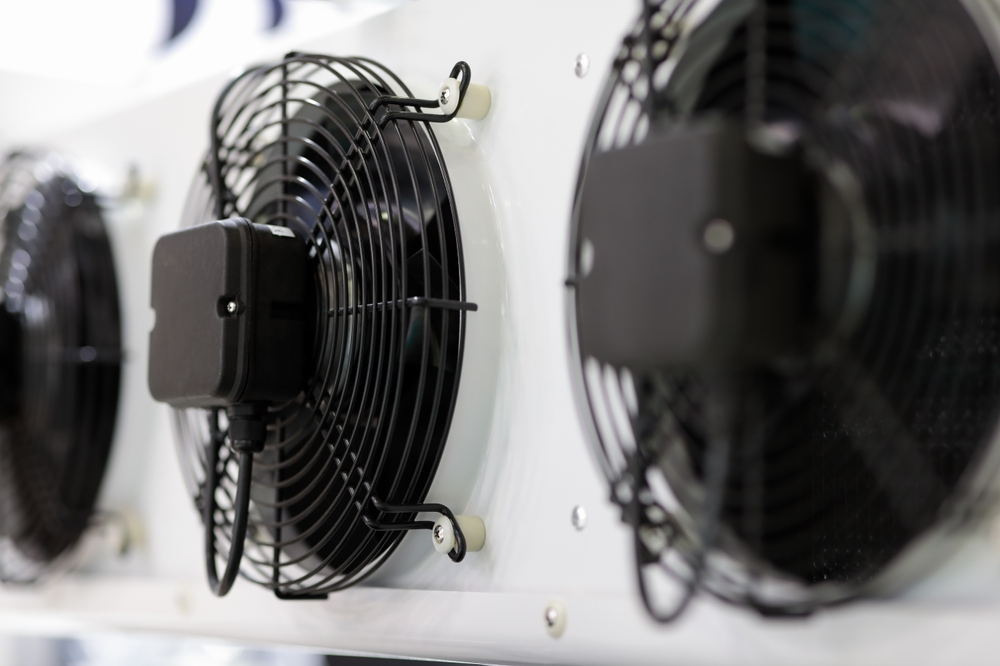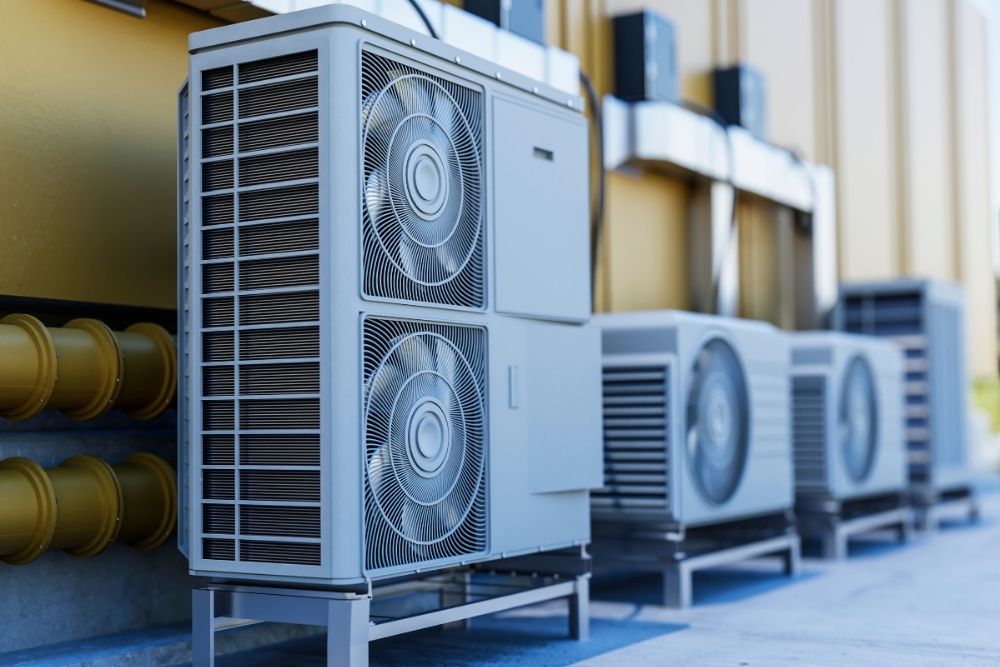
Resistance Life Enchance: Operation Maintenance and Savings Tips


Air-cooled condensers work by transferring heat to the surrounding air in cooling systems. The hot refrigerant gas from the compressor passes through the condenser’s tubes, where fans facilitate airflow, causing the gas to condense into a liquid. This process ensures the environment remains cool through heat transfer. Air-cooled condensers are notable for their compact structures and do not require a water source, making them popular in regions with limited water availability. Microchannel technology enhances energy efficiency by improving heat transfer in modern air-cooled condensers. Leading brands in the cooling industry develop these systems with features like noise reduction and durability. They are commonly used in commercial buildings, supermarkets, and small-scale industrial facilities. Air-cooled condensers stand out for their ease of installation and low initial costs. However, their efficiency may decrease in hot climates, as high ambient temperatures hinder heat transfer. Nonetheless, technological innovations continue to improve their performance, offering businesses both economic and practical solutions.
Water-cooled condensers perform cooling by transferring heat to water. The hot gas from the compressor passes through the condenser’s tubes, where it comes into contact with water, transferring heat to it. This water is typically cooled through a cooling tower and recirculated into the system. High efficiency is the greatest advantage of water-cooled condensers, as water is a better heat conductor than air. These systems are particularly preferred in large-scale industrial facilities and data centers. Cooling towers are critical components for efficient operation. Leading brands in the cooling industry optimize these condensers for energy savings and longevity. Water-cooled systems provide consistent cooling performance, even in hot climates. However, they require additional costs for water usage and tower maintenance. They are more advantageous in regions with abundant water resources. These systems meet businesses’ needs for high energy efficiency and reliability, offering long-term savings.
Air-cooled condensers offer numerous advantages for businesses. One of their biggest benefits is that they do not require a water source, making them ideal for regions with limited water availability. Their ease of installation makes them attractive for small and medium-sized businesses. Low initial costs are a significant factor, especially for businesses with limited budgets. Air-cooled condensers typically feature compact designs, saving space. Microchannel technology increases energy efficiency, reducing operating costs. Leading brands in the cooling industry develop these systems with noise reduction and corrosion-resistant materials. Maintenance processes are simpler and more cost-effective compared to water-cooled systems, as they do not require additional components like cooling towers. However, their performance may decline in high ambient temperatures, which is a consideration in hot climates. Nonetheless, thanks to technological advancements, air-cooled condensers are widely used, from supermarkets to office buildings. These systems are a reliable choice for businesses seeking practicality and cost advantages.

Water-cooled condensers stand out for their high efficiency and are particularly preferred in large-scale applications. Thanks to water’s high thermal conductivity, these systems offer superior cooling performance and maintain consistent efficiency, even in hot climates. Energy efficiency is one of their greatest advantages; they consume less energy compared to air-cooled systems. This provides cost savings, especially in data centers and industrial facilities with high cooling demands. Leading brands in the cooling industry design these systems with durable and environmentally friendly materials. Water-cooled condensers operate more quietly and have lower vibration levels, enhancing user comfort. However, they require additional components like cooling towers and water treatment systems, which increase installation and maintenance costs. They are more advantageous in regions with abundant water resources. For businesses seeking high performance and energy savings, water-cooled condensers are a worthwhile long-term investment.
Energy efficiency is a critical factor in condenser selection. Water-cooled condensers generally offer higher energy efficiency because water is a better heat conductor than air. This is particularly advantageous in high-temperature environments or facilities with intensive cooling needs. The use of cooling towers optimizes energy consumption in water-cooled systems. However, these systems require more infrastructure due to additional components. On the other hand, air-cooled condensers have improved energy efficiency thanks to microchannel technology and variable-speed fans. Still, their performance may decline in hot climates, leading to higher energy consumption. Leading brands in the cooling industry develop innovative designs to maximize energy savings in both systems. For example, smart control systems optimize energy use in both types of condensers. Generally, water-cooled condensers are more efficient for large-scale applications, while air-cooled systems may be suitable for smaller businesses with less infrastructure. The choice depends on the business’s needs and budget.
Maintenance costs are an important criterion when choosing a condenser. Air-cooled condensers generally have lower maintenance costs because they do not require additional components like cooling towers or water treatment systems. Their simple designs make maintenance processes easier and allow technicians to intervene quickly. Routine tasks like fan and coil cleaning are typically low-cost. On the other hand, water-cooled condensers have a more complex structure. Maintenance of cooling towers, water treatment, and pipe cleaning increases costs. Regular testing is required to maintain the chemical balance of water, adding to expenses. Leading brands in the cooling industry use smart technologies to streamline maintenance processes for both systems. For example, IoT sensors can detect issues early, reducing maintenance costs. Air-cooled systems offer an economical option for small businesses, while water-cooled condensers provide long-term savings through high efficiency in large facilities. Maintenance budget and business needs will determine the choice.
Choosing an environmentally friendly cooling system is critical for sustainability goals. Water-cooled condensers consume less electricity due to their high energy efficiency, reducing their carbon footprint. However, water usage and chemical treatment processes can have environmental impacts. In regions with limited water resources, their environmental cost increases. Air-cooled condensers, on the other hand, require no water consumption, making them advantageous for water conservation. Environmentally friendly refrigerants are used in both systems to reduce the impact on the ozone layer. Leading brands in the cooling industry improve the environmental impact of both systems by using recyclable materials and energy-efficient designs. Air-cooled condensers may consume more energy in hot climates, increasing carbon emissions. Generally, water-cooled systems excel in energy efficiency, but air-cooled systems conserve water. The climate and water availability of the business’s location play a key role in determining the most environmentally friendly option.
Installation processes vary significantly between air-cooled and water-cooled condensers. Air-cooled condensers offer the advantage of simple installation, as they do not require additional infrastructure like water pipes or cooling towers. This reduces installation time and costs, making them ideal for small and medium-sized businesses. They can be installed in a suitable location and connected to electricity to operate. In contrast, water-cooled condensers require a more complex installation process. The installation of cooling towers, water pipes, and treatment systems is both time-consuming and costly. Leading brands in the cooling industry offer modular designs to simplify the installation of these systems. However, water-cooled systems are often preferred in large-scale facilities due to their high efficiency, making the extra effort worthwhile. Air-cooled condensers are advantageous in space-constrained areas, while water-cooled systems provide consistent performance. Installation budget and infrastructure availability will determine the choice.
Different industries prefer air or water-cooled condensers based on their needs. The food industry, particularly cold storage and supermarkets, often uses air-cooled condensers due to their ease of installation and low maintenance costs. The pharmaceutical industry may opt for water-cooled condensers for their consistent performance in precise temperature control. Data centers, with high energy efficiency and continuous cooling needs, typically favor water-cooled systems. Industrial facilities benefit from water-cooled condensers for large-scale cooling demands. On the other hand, office buildings and small commercial spaces choose air-cooled condensers for their compact structures and low initial costs. Leading brands in the cooling industry offer tailored solutions to enhance the efficiency of both systems. For example, microchannel technology makes air-cooled condensers suitable for smaller businesses. Industry needs, budget, and environmental conditions determine the most appropriate condenser.
Climate conditions significantly influence condenser selection. Air-cooled condensers are more efficient in temperate climates, where low ambient temperatures facilitate heat transfer. However, their performance may decline in hot and humid regions, increasing energy consumption. Water-cooled condensers offer consistent performance in hot climates, as water’s high thermal conductivity enables effective cooling regardless of ambient temperature. However, these systems rely on water availability, which can be an issue in arid regions. Leading brands in the cooling industry develop innovative solutions to adapt both systems to climate conditions. For example, variable-speed fans in air-cooled condensers improve efficiency in hot weather. Water recycling in water-cooled systems reduces environmental impacts. Businesses should consider their region’s climate and water resources when choosing. Climate is a critical factor for both energy efficiency and long-term costs.
Cost is an important criterion when selecting a condenser. Air-cooled condensers stand out for their low initial costs and simple installation processes. They do not require additional infrastructure like water sources or cooling towers, making them economical for small and medium-sized businesses. Maintenance costs are generally lower due to the absence of complex components. However, increased energy consumption in hot climates can affect long-term costs. Water-cooled condensers have higher initial costs due to the need for cooling towers and water treatment systems. Still, their high energy efficiency provides long-term savings, especially in large-scale facilities. Leading brands in the cooling industry use innovative technologies to reduce costs for both systems. For example, smart control systems optimize energy consumption, enhancing cost-effectiveness. The business’s budget, scale, and energy needs determine which system is more advantageous. Air-cooled systems are typically better for small businesses, while water-cooled systems suit large facilities.
The choice between air-cooled and water-cooled condensers depends on your business’s needs and conditions. Air-cooled condensers are ideal for small businesses and regions with limited water resources due to their ease of installation and low initial costs. Their compact designs save space, and maintenance processes are straightforward. However, efficiency losses may occur in hot climates. Water-cooled condensers, with their high energy efficiency and consistent performance, are suitable for large-scale facilities, data centers, and industrial applications. They are more advantageous in regions with abundant water resources but have higher installation and maintenance costs. Leading brands in the cooling industry offer environmentally friendly and innovative solutions for both systems. Your business’s climate conditions, budget, energy needs, and environmental goals should shape your decision. For example, if sustainability is a priority, water-cooled systems’ energy savings may be appealing. For small-scale businesses, air-cooled condensers are more practical. The right choice ensures long-term efficiency and cost savings.

Fill out the form to discover the most suitable high-end products for your projects. Contact Us Now.